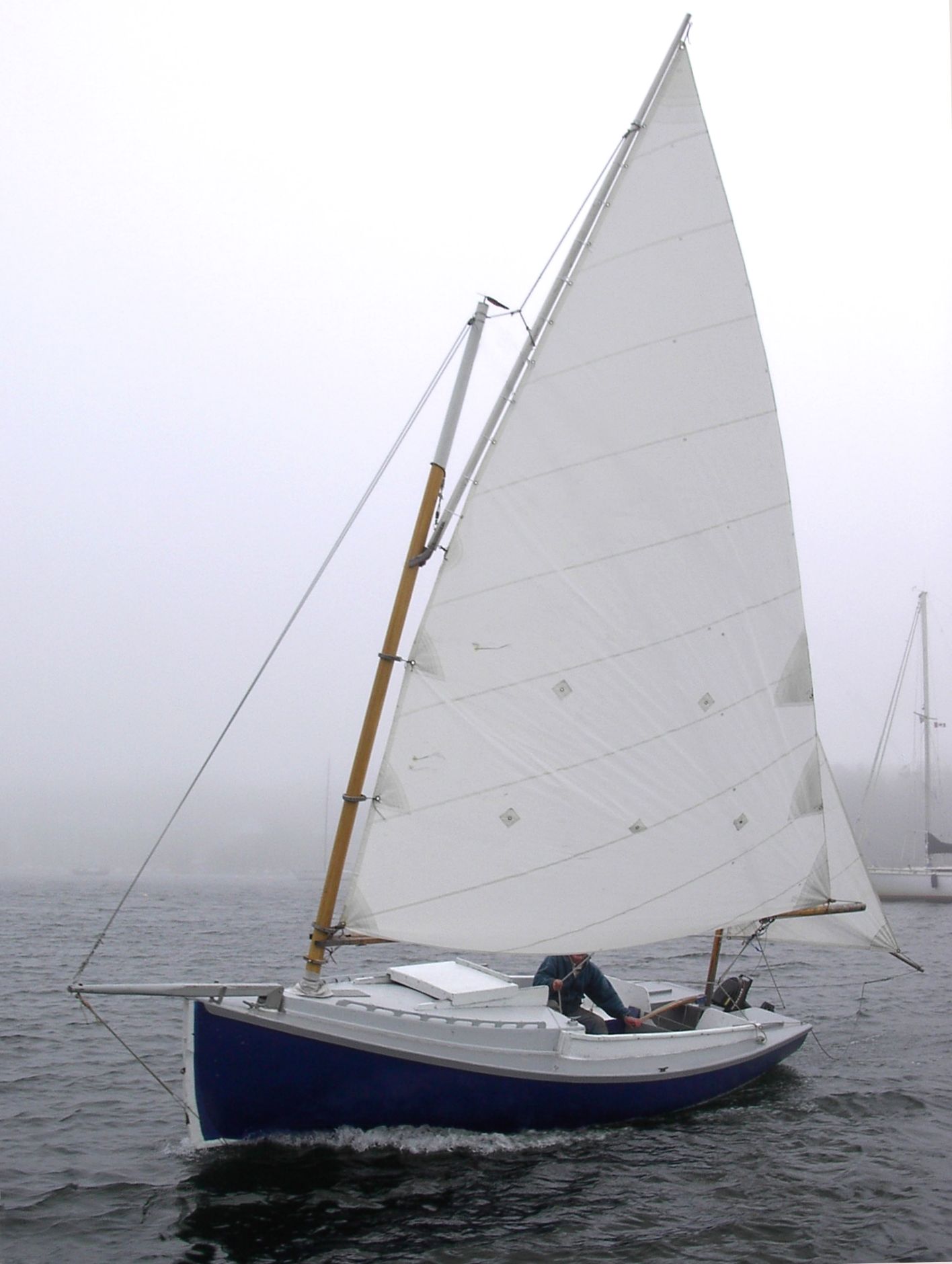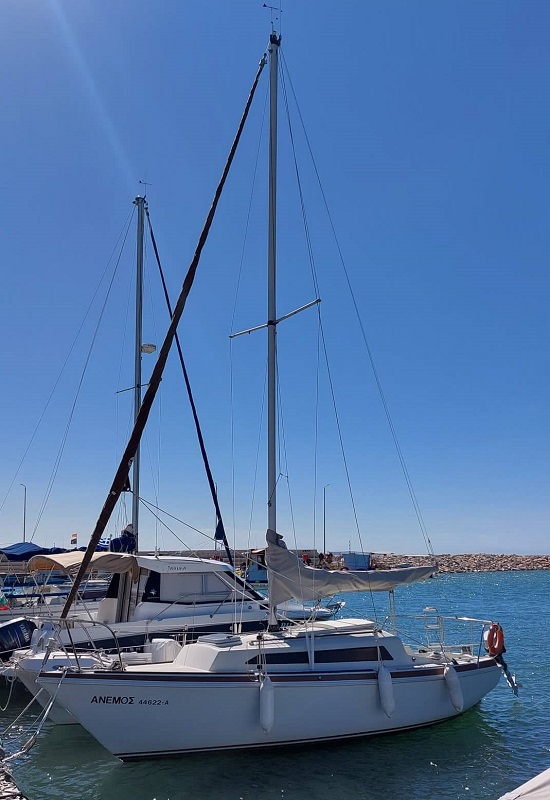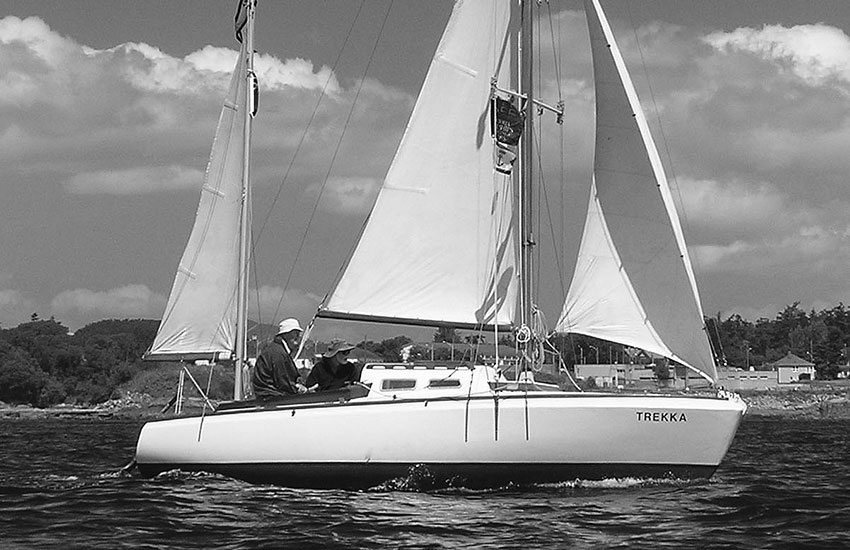About 15 years after I first dipped a paddle in salt water I worked up the courage to try a multi-day kayak camping trip. I planned this to follow a route along Nova Scotia's south shore, most of which I had already traversed in my 22 foot sailboat, Water Music. Fraser Howell, with whom I had shared numerous small boat adventures, agreed to come along on the first day and camp overnight on Cape LaHave island with me. He would not go further because he had recently been experiencing vertigo in the kayak that made it feel like he was always about to tip over.
The voyage began inauspiciously when I discovered a flat tire on my car. I put on the spare and drove to the local country store/gas station where the owner, Stuart, saved the day with a tire plug kit. He got me back on the road in time to meet up with Fraser at a boat launch on Bush Island. Bush island is one of the LaHave islands that spread across the entrance to LaHave river on Nova Scotia's South Shore. It is connected to the mainland by a bridge and causeway and is a perfect starting point for exploring the waterways and passages between the islands. It was early June and lobster season had just ended, so we were to have the water to ourselves.
We paddled our homemade wooden boats through Wolfe gut and past Tumblin and Bell islands. As we reached the end of LaHave island, we left behind civilization and the islands that are joined by road to the mainland. We passed what must have once been fisherman's homes on Cabbage and Middle Island and pointed our bows across Bell channel toward our destination - a beach at the northern end of Cape LaHave Island. This is the largest of the LaHave islands and does not have permanent homes on it any more. We set up our tents in a clearing above the beach and made supper.
The next morning I said goodbye to Fraser and as I watched him paddling back towards Bush Island I felt the excitement and trepidation that always seems to accompany a new adventure. Over the next four days I would paddle about 120 kms to Halifax, camping along the way wherever I found myself at the end of the day.
 |
| Route from our campsite on night one to the head of the Northwest Arm in Halifax |
The first day on my own I figured I should be able to make it around a couple of points and perhaps get as far as Blue Rocks or Stonehurst near Lunenburg. I was a little nervous about how heavily I had loaded down the kayak with camping gear and food. It was sitting low in the water and I was not used to paddling the boat with this much weight. Another concern was the open water I would need to cross in order to make it to Halifax in the time I had off from work. If I followed the coastline to avoid the longer crossings, it would probably take me more than twice or even three times as long, so I would need to take the risk. The kayak I was paddling was a river boat my father had built for my brother Mike 25 years earlier. It had no interior partitions that would have provided flotation and buoyancy if I capsized. I knew that in the event of a capsize I would not be able to easily get back into the flooded boat and get it pumped out. With the cold water temperature and almost no-one else on the water, if I flipped over more than a few hundred meters from the land I would likely not survive.
The first day turned out to be quite short. I can't recall why exactly now, but it was probably my nerves that made me end it early. Almost right away, I had to make the first longer crossing to Gaff Point through the choppy waters between the point and West Ironbound Island. I still recall being worried about how the boat would handle the chop and when the wind began to build, small waves started to toss the boat around. The problem with paddling along the outside of an indented coast like Nova Scotia's Eastern or South shores is that there are few places to land safely and lots of points jutting out to reflect waves and make the ocean harder to read.
I recall an amazing sight shortly after rounding Gaff Point. As I paddled along outside the breakers off Hirtles Beach I could see what looked like surf off the next point. When I crossed Hartling Bay I discovered that what I had assumed was surf was in fact huge sheets of foam, much like you would find in a bubble bath. This foam was probably left over from the vicious surf pounding onto the ominously named Hell Point. Looking at a Google satellite view of this area today, you can see how surfy this point is.
 |
| Surf and foam forming at the east end of Hartling Bay near Hell Point |
I camped that night on the Kingsburg peninsula in a soon-to-be built upon housing estate development. At that time, this was a wilderness of bracken and short windswept trees, with only a few survey markers to hint at its future.
The next day I visited the Ovens, which are famous for their sea caves and an old gold mine. I poked the nose of the kayak to look into one of the caves, but my exploration was cut short by the arrival of a zodiac tour boat. I rounded the Ovens Point and began another large crossing to Blue Rocks. I had paddled at Blue Rocks before and knew that once across I would have shelter and easy paddling. The crossing went smoothly, and I began to feel more confidence in my overloaded kayak. Sitting lower in the water seemed to make the boat more stable and less affected by wave action. The paddle amongst the shale ledges and islands of Blue Rocks was incredibly scenic, and I had a gentle tailwind that made paddling a pleasure. Once past Stonehurst I would be faced with another large crossing of a large portion of Mahone Bay.
I stopped for a tea break on Rake Island just inside Hell's Rackets where dozens of seals eyed me as I landed on the gravel beach. I then decided to paddle across the mouth of Mahone Bay to Tancook Island and have lunch there before continuing to the Aspotogan Peninsula. This would be my longest continuous crossing to date, at nearly 8 kilometres. It was still early in the day and the seas were kind to me. I made it into the bay where the ferry arrived from Chester in time for lunch. Before I left, I dropped by the ferry and asked the captain for a marine weather forecast. Looking at my kayak pulled up on the nearby beach, he confided that he would not take that across the little bay we were in, let alone across Mahone Bay. I have heard those sentiments more than once from big boat skippers and fishermen, too.
By the afternoon, the wind was up - again from the southwest - and the waves had built to about a foot as I launched from the beach. The conditions outside were similar, and I tried to feel the rhythm of the waves and match my stroke to avoid leaning too far one way or the other. As the afternoon progressed and the waves built higher, and higher, I began to feel like my kayak was just one instrument in an orchestra and the surrounding waves were also instruments, each playing a different line that I had to harmonize with in order to stay afloat. The music was wild and complex! So long as I kept on top of things and played things correctly, I could keep my boat moving safely through the tumult.
I made it safely across the rest of Mahone Bay and camped that night in a lonely cove on the Aspotogan Peninsula. I was running low on water and was forced to gather standing water from crevices in the rock to make my tea and wash up. The night was clear, and I remember looking out of the tent at the intense blackness and a bright canopy of stars overhead.





























































